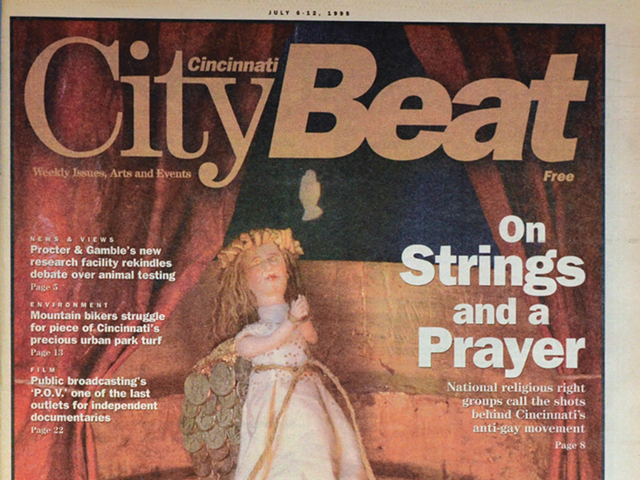Looking back over 20 years, it’s fascinating to review the CityBeat archives to see how hundreds of people, decisions and events built Cincinnati into what it is today. Issues that at the time we deemed “do or die” — from redeveloping Over-the-Rhine in 1994 to endorsing Ralph Nader for President in 2000 to building a streetcar line in 2009 — fade into one another in hindsight, forming a destiny that fits together in the end.
Just a handful of moments significantly changed the course of Cincinnati history in the past 20 years, and only occasionally did any of us realize then and there that significant change was at hand. One of those moments was the 1996 vote to build new stadiums for the Bengals and the Reds.
The Bengals’ Mike Brown, seeing fellow NFL owners build new stadiums to generate huge new revenue streams, suggested the city replace 25-year-old Riverfront Stadium. When City Council refused to act, his suggestion turned into a threat — Brown set a deadline for a stadium deal and said he’d move the Bengals to Baltimore if he didn’t get what he wanted. (Baltimore had lost its Colts franchise a decade earlier to Indianapolis.)
Legend had it that rookie Hamilton County Commissioner Bob Bedinghaus sketched out a plan in his kitchen to raise the county sales tax by a half cent for 20 years to fund new stadiums for both the Bengals and the Reds, demolish Riverfront and retire the rest of that facility’s debt. A citizens group collected signatures to force the plan to a public vote, which was scheduled for March 19, 1996.
After dozens of stories and editorials, CityBeat published a three-part synopsis of the debate just before the vote. Part 1 of “2 Minute Warning” analyzed details of the $544 million funding plan, 56 percent of which would come from the sales tax. County and team officials insisted that there was no Plan B and if the vote failed the Bengals were moving, but CityBeat presented Plans B, C, D and E that showed ways to fund construction through user fees and surcharges and/or combine a domed football stadium with a new convention center, another downtown priority at the time.
Part 2 questioned the glowing pro-sales tax coverage from The Cincinnati Enquirer, Cincinnati Post and WLW-AM, all of whom benefited financially from the teams’ continued presence in town. Part 3 basically mocked the sales tax campaign’s claims of state funding, private and corporate contributions and amazing spin-off economic benefits.
CityBeat was adamantly against the sales tax, Issue 1 on the ballot. Just about everyone else was for it, and Issue 1 won easily.
Excerpt:
“What it boils down to is this: The Reds and Bengals are definitely worth supporting and nurturing, but not at this price and not with such an alarming lack of detail. …
“There is no excuse for not devising a fair plan that uses a combination of public funds and private money, that more heavily taxes those who would use new stadiums, that puts public money toward public projects and that provides spending details before it’s approved.” (CityBeat endorsement against Issue 1, March 14, 1996)
Today:
We were right then, we’re right 18 years later and we’re still pissed off about the whole thing.
The Bengals’ stadium opened in 2000; the sales tax funding plan budgeted construction at $170 million, but it ended up costing $450 million. The Reds’ stadium opened in 2003; voters were told it would cost $160 million, but it was actually $290 million.
A total of 14 new or renovated NFL stadiums have opened since the Bengals’ palace debuted, and only three used any kind of sales tax increase to help with funding: Denver, where a 1/10-cent regional tax was raised across multiple counties; Dallas, a city-only sales tax bump; and Green Bay, the only community-owned NFL team. All other stadium construction relied on private backing, state funds and a mix of hotel, car rental and parking taxes, and ticket surcharges (i.e. user fees).
Many of those new stadiums received $150 million grants from the NFL to help with construction, under the G-3 program the league instituted in 1999. The program’s newer version, G-4, now hands out $200 million per stadium, most recently for the San Francisco 49ers’ new home. The NFL didn’t contribute a dime in Cincinnati.
Hamilton County’s finances have been a disaster for years thanks to the stadium funding obligation, which was sold with rosy campaign projections of increasing tax revenues that (big surprise) never materialized.
Once the football stadium fiasco became apparent, voter backlash tossed out Bob Bedinghaus in 2000, electing the first Democratic County Commissioner in 36 years (Todd Portune). Bedinghaus was hired by the Bengals, where he still works today.






